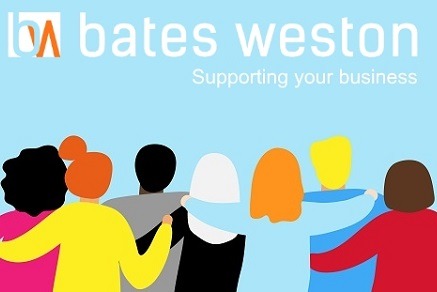These are uncharted waters for all of us. The stakes are high. As an SME ourselves, we are facing the same challenges as many of our clients. In this article we look at practical tips for SMEs.
What are the challenges SMEs face and what are we suggesting our clients do ?
The most immediate concern is cashflow. Following government advice to stay home, for many businesses, income will dry up and business owners face a tough decision.
Do they:
- continue to trade as best they can, with staff continuing to be employed but working from home
- furlough their work force and temporarily close their businesses. Furloughing, a term new to many, means granting a leave of absence
It is not an either/or situation. Businesses can scale back their workforce, furloughing those who are unable to work from home or where there is insufficient work for them to do.
Our Partners are talking to their clients. Helping them to get to grips with their cash flow forecasts, to cut or postpone costs where they can and hang on to the cash in their businesses. That means talking to landlords, HMRC and suppliers. With a clear picture of your outgoings and your fixed costs you can see the gap in your cashflow and look at the options available to plug it. That could include bank loans, overdraft facilities, credit facilities or accessing the Coronavirus Business Interruption Loan.
The Coronavirus Job Retention Scheme offers a way to retain your staff so that they can help you rebuild your business in the future. You designate your workers as “furloughed” and pay them through PAYE as normal. Through the scheme, the government will reimburse up to 80% of furloughed employees wage costs, but as the system for doing that is not yet up and running your business will need to find the cash to fund wage costs in the short term. That is where the financing options we mentioned above come in. We are helping our clients to prepare the financial information their lenders may need.
The Coronavirus Job Retention scheme is clearly a key piece of the package of support available from the Government. The rules of the scheme, as we know them to date are set out below. If you are considering taking this option talk to us. We can help you with the process.
Furloughing guidance
- Furloughed members of staff must not work for the employer during the period of furlough
- Furlough is from 1 March 2020, so is to be backdated. It will last for at least 3 months and will be extended if necessary. Note that while the scheme is backdated to the beginning of March as it is intended to support all those employed then, a firm will only be eligible to claim the grant once they have agreed the furlough with their staff and staff have stopped working for the employer. This will of course be subject to employment law in the usual way
- It is available to employees on the payroll at 28 February 2020
- All UK businesses are eligible, ‘any employer on the country, small or large, charitable or non-profit’ to use the Chancellor’s words
- The scheme pays a grant (not a loan) to the employer
- The grant will be paid to the employer through a new online system which is being built for this purpose
- The employer will pay the employee through payroll, using the Real Time Information (RTI) system as usual, as required by the employment contract. This contract may be renegotiated but that is a matter for employment law. So RTI system reporting of payroll will continue as normal
- Scheme will be administered by HMRC:
Relevant employees must be designated as furloughed employees
• Employers will submit information to HMRC through a new online portal
• As this will take time to build, businesses should look to the Coronavirus Business Interruption Loan Scheme to support cash flow in the meantime. The narrative used in the information released so far says ‘if your employer cannot cover staff costs due to COVID-19 they may be able to access support…’. This is a conditional phrase which may relate to existing funds available to the employer. We do not yet know how these might be determined, nor whether there is a bar of some description - Maximum grant will be calculated per employee and is the lower of:
- 80% of ‘wages’. The notes published so far, use the phrase ‘wage for all employment costs up to a cap of £2,500 per month’. It is our understanding that this includes employers’ NIC and pension contributions. Wages will be determined by reference to a defined period (yet to be announced).
- £2,500
(Source: ICAEW)
We will publish more details on the reimbursement scheme as soon as we have them.
Wayne Thomas, Partner at Bates Weston, comments on the response we have been receiving from clients and staff.
“ I’ve found it heartening that our clients feel able to turn to us for support right now, and delighted at the way my team has risen to this. We are having to interpret entirely new government backed schemes and systems in a rapidly changing environment and guide our clients as best we can.
As much as possible, I want us to carry on as normally as possible, with working from home having very little impact on the service we are able to provide. On a lighter note, we are all better skilled in the arts of remote working.
Rest assured, we stand ready to do all we can to help your business, so please do get in touch.”

